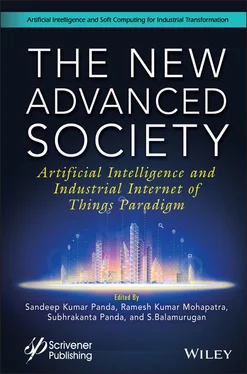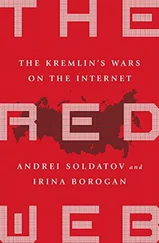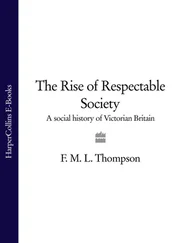– Chapter 13discusses the symptoms of COVID-19, precautionary measures against it, ways of spreading the corona-virus, and technologies used to fight it. Also discussed is the impact of COVID-19 on business, financial markets, supply-side and demand-side economics, and international trade on the Indian economy.
– Chapter 14discusses the convolutional neural network (CNN) used for detecting skin cancer and compares the accuracy of the model by applying a vast dataset by varying the parameters, such as number of layers, activation functions, etc., to find the best suitable parameters for CNN to design the classifier that could give the best accuracy while classifying the images of the seven types of skin cancer.
– Chapter 15presents the hybrid outcome of the firefly algorithm (FA) and artificial potential field (APF) algorithm for humanoid control, which is preferred in the present study for navigational tasks.
– Chapter 16proposes a system that considers the student’s academic and behavioral characteristics. The data collected can help faculty members gain a better understanding of a student’s level of knowledge and personality. Based on the information collected, students are grouped into clusters using k-means clustering and a suitable partner is selected for group activities using Irving’s algorithm to enable active learning.
– Chapter 17discusses how the workload prediction in cloud environments improves proper utilization of resources so that service level agreement remains at a stable level. Hence, the particle swarm optimization (PSO)-based hybrid wavelet weighted k-nearest neighbors (PHWkNN) algorithm is proposed to predict workload in the cloud data center.
– Chapter 18includes a survey for predicting bankruptcy, in which it was concluded that preprocessed datasets have a better prediction outcome and that ensemble models are more powerful for bankruptcy prediction as compared to the single models.
– Chapter 19aims to provide a comprehensive review of the research done with respect to the application of AI and ML in the agriculture domain and the key strategies adopted by leading companies like Deere & Company (John Deere, US), Microsoft Corporation, Descartes Labs, ec2ce (Spain), etc., in the agricultural market. The chapter also discusses the current scenario and emerging trends of AI and ML in the Indian agriculture sector. Next, it demonstrates how the application of these technologies has bright prospects in Indian agriculture and can impact the agricultural market in the long term, and how the technological support will boost the agricultural economy by creating new opportunities in agriculture’s operational environments. Finally, it studies the barriers in the application of AI and ML in the Indian context.
The topics presented in each chapter are unique to this book and are based on the unpublished work of the contributing authors. In editing this book, we attempted to bring into discussion all the new trends and experiments for creating an advanced society. We believe this book is ready to serve as a reference for larger audiences such as system architects, practitioners, developers and researchers.
Sandeep Kumar Panda ICFAI Foundation for Higher Education (IFHE), Deemed to be University,Hyderabad, Telangana, India January 2022
The preparation of this edited book was like a journey that we had undertaken for several months. We wish to express our heartfelt gratitude to our families, friends, colleagues, and well-wishers for their constant support throughout this journey. We express our gratitude to all the chapter contributors, who allowed us to quote their remarks and work in this book. In particular, we would like to acknowledge the hard work of authors and their cooperation during the revisions of their chapters. We would also like to acknowledge the valuable comments of the reviewers which have enabled us to select these chapters out of the so many chapters we received and also improve the quality of the chapters. We wish to acknowledge and appreciate the Scrivener Publishing, Wiley team for their continuous support throughout the entire process of publication. Our gratitude is extended to the readers, who gave us their trust, and we hope this work guides and inspires them.
1
Post Pandemic: The New Advanced Society
Sujata Priyambada Dash
Department of Management, Mesra, Ranchi, India
Abstract
The World Health Organization (WHO) declared the COVID-19 outbreak as a global public health emergency of international concern. The pandemic has increased the suffering of humanity enormously. Loss of income and employment opportunities is the massive adverse effect of the pandemic. Due care needs to be taken by the top-level management of every sector to understand the adverse effect and causes or problems and to build the measures to overcome from the pandemic. The researcher had attempted and discussed the themes viz., areas of management, financial institutions cyber-crime, economic notion, human depression, school and colleges closures, returning of migrant laborers to identify the constraints and to come up with the remedial measures to overcome those constraints and how to build a new advanced society of Post COVID-19 era.
Keywords: Areas of management, financial institutions cyber-crime, economic notion, human depression, school and colleges closures, emotional intelligence, ikigai, migrant labor
On December 31, 2019, the World Health Organization (WHO) contacted China about media reports of a cluster of viral pneumonia in Wuhan, later attributed to a coronavirus disease by the name, SARS-CoV-2 and now referred to as COVID-19 [1]. The WHO proclaimed the virus to be an international public health emergency (PHEIC), by January 30, 2020, a month later, the highest alert that the organization would sound. The pandemic was well underway in thirty more days and had spread to more than 70 countries and territories on six continents, and about 90,000 confirmed COVID-19 cases were registered worldwide [2].
The purpose of this analysis is to minimize this opportunity by understanding what went wrong with the coronavirus pandemic’s early national and international responses, as long as a roadmap for improved preparedness and implementation by countries and the multilateral framework for potential surfs of the current pandemic, and when the subsequent pandemic menace will inexorably occur. Before it becomes a tragedy, this study aims to avoid the next global health challenge. The pandemic of COVID-19 by far could still develop in unpredictable ways. It is already clear to detect, contain and quickly respond to and prevent the blowout of possibly unsafe new infectious diseases, preparation and early execution are important. The capability to marshal early action rest on the preparation for the worst-case situation of a severe pandemic by nations and global organizations and the readiness to execute on that preparedness.
In order to counter the pandemic, the leadership areas considering the healthcare system and the police management system played a very important role. This research has explored the digital world that, including risk and crime, has transformed almost every aspect of our lives. Again, the focus of this research was on economic activities that have become vulnerable to society. Most importantly the feelings, emotions, and sentiments of the people are predominant. Thus, the study describes Emotional Intelligence (EI) to get rid of depression as one of the remedial measures to manage the situation more self-confidently, enjoy the work passionately and to carry out positive boldness. The study indicated a very challenging task faced by the government to tackle the unemployed migrant laborers and measures to provide employability in due course of time is discussed. Thereafter, the biggest challenging theme deliberated is the digital transformation of educational institutions that paves the way towards technology which is the enabler. Through technology the users’ (students and teachers) experience has become intuitive and innovative. Human Development Index (HDI) has become the priority of every educational institutions. Lastly, ‘ikigai’ which means ‘reasons for being’ is discussed so that during the closure of schools and colleges, students and teachers will remain happy, will bring fulfilment, and live a longer life.
Читать дальше












